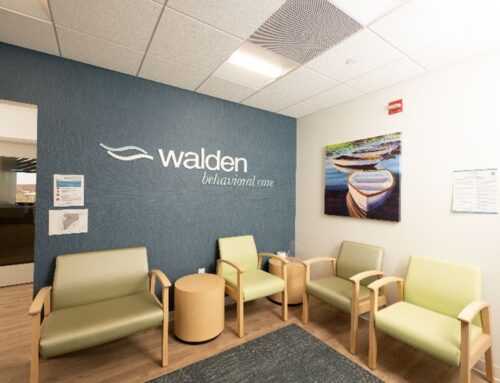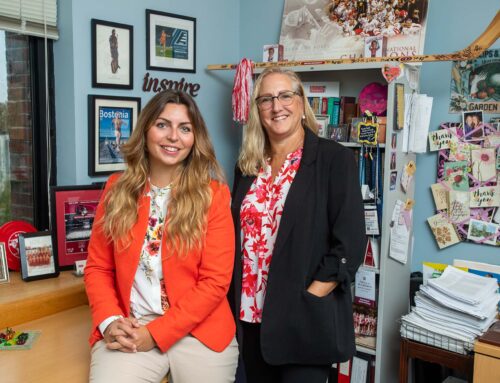This post was originally featured in the New Haven Register
Eating disorders are centered around negative body images.
But artistic images, generated by those who suffer from eating disorders, can have a healing power. That was the message delivered Friday night at Albertus Magnus College, which hosted a program and art exhibition on “The Images of Eating Disorders.”
The program involved presentations from five alumni of the school’s master’s degree program in art therapy and counseling. It also featured artwork done by the therapists’ clients as part of their treatment for eating disorders.
“These images become potential lifelines,” said Abbe Miller, an associate professor at Albertus Magnus who also has her own Hamden-based private practice in art therapy. “It’s not about how well you draw or what kind of artistic skill you have. It’s about what it makes you feel like when you create something.”
While the public perception of eating disorders is that they afflict young women, Miller said many of the clients she treats are women older than 30.
“I think of it as a cultural disease,” she said. “Though many of these women are older, they still feel as though they are being judged by their bodies.”
Sarah Guerica, a therapist with Walden Behavioral Care in Guilford, said art “is the universal language.” And like the spoken language, she said, it is something that involves a two-way communication.
In order to facilitate that communication with her clients, Guerica does artwork of her own as she works with them.
“In order for me to help them, I need to tap into the image I have of myself,” she said.
The art exhibition at the school, “Reflections on the Eating Disorder Journey,” features a mix of work done by art therapy professionals such as Guerica as well as pieces created by their clients. The client-produced artwork is identified only by initials to protect their privacy.
The school’s Art Therapy and Counseling program was created 20 years ago and is the only one in the state of Connecticut, said Lisa Furman, the program’s director.
“Art therapy can be used as an alternative to verbal therapy or in combination with it,” Furman said. “But in cases of trauma where individuals are having trouble verbalizing what they are feeling, a picture really is worth a thousand words.”
The art exhibition will be on display through Nov. 3 in the Margaret MacDounugh Gallery at the school’s Hubert Campus Center.






